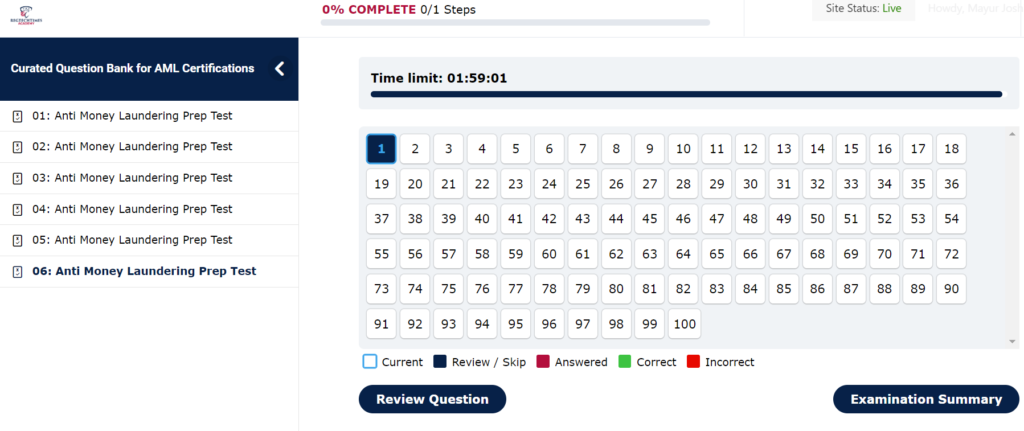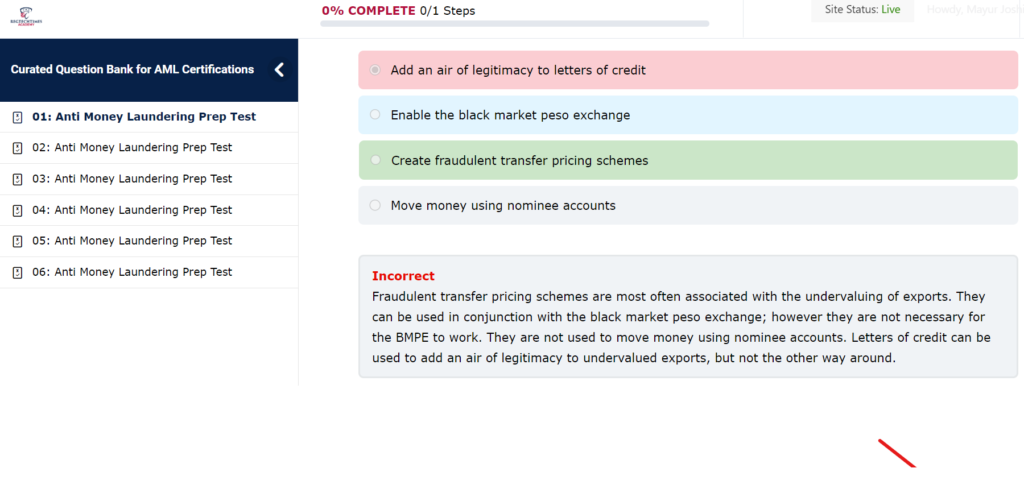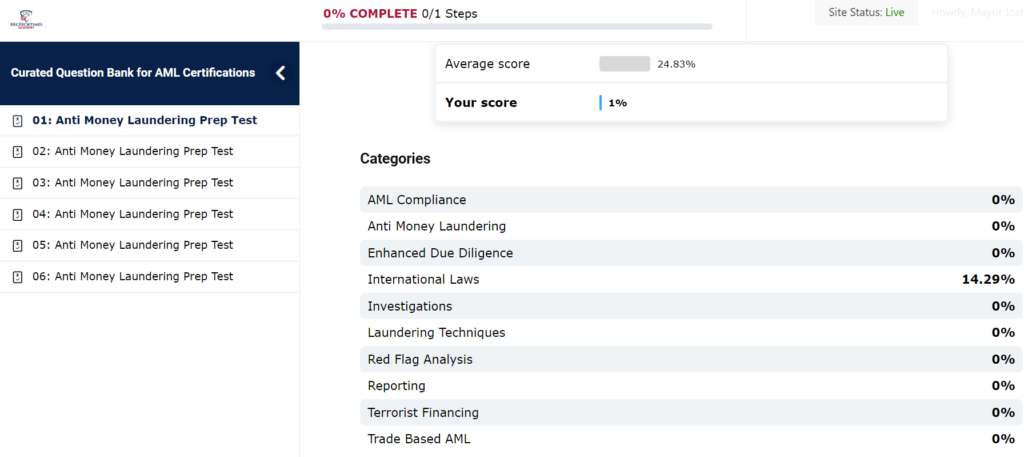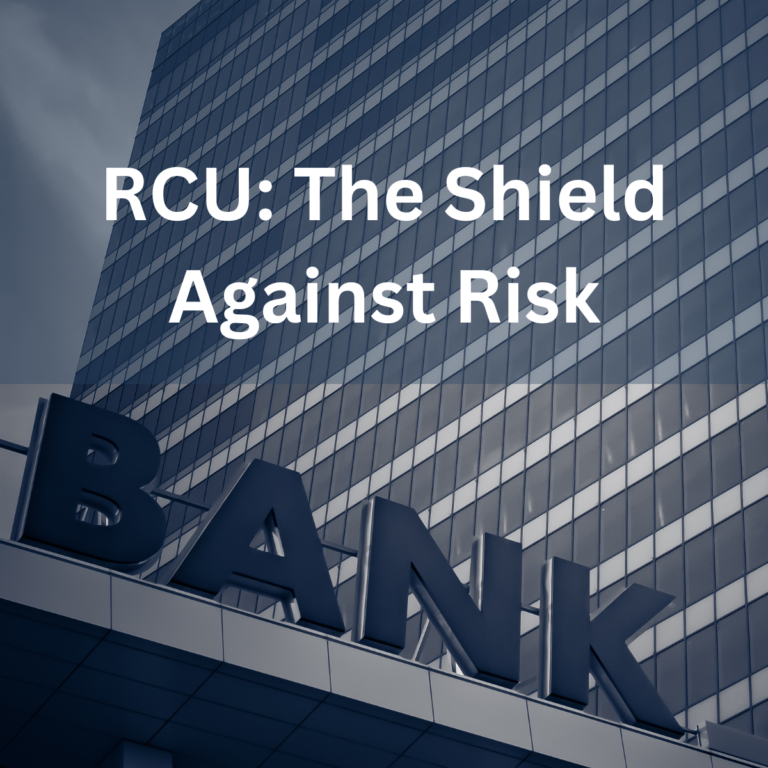Introduction
Anti Money laundering promotes criminality and corruption. It dampens economic development in every nation. Because such markets are always attempting to develop their economies and financial sectors. As a result, they are appealing to victims of money laundering.
Global anti-money laundering and anti-terrorism funding legislation aims to tackle this situation. This is to prevent the adverse economic effects that might be examined in a number of settings. Money demand, growth rates, income distribution, tax revenues, and financial institutions are all factors to consider.
Evolving AML definition
Terrorism, terrorist activities, funds of criminality, specified non-financial organizations, and occupations were all specified by the legislator. The Financial Action Task Force (FATF) classifies these as real estate brokers. Valuable metals merchants Exotic stone merchants’ Legal experts (litigators, registrars, other unaffiliated legal specialists, and accountants), financial groupings, and sham financial institutions. The legislator attempted to broaden and enlarge the terms. This is also done in order to comply with the worldwide guidelines and requirements of the Financial Action Task Force (FATF). The FATF Guidelines are widely recognized worldwide standards. They help in combating money laundering and terrorism funding. Transparency increased by the standards. It also helps nations to effectively combat illegal financial system usage.
Anti-money laundering (AML) relates to the network of rules, guidelines, and processes. These are designed to detect attempts to camouflage criminal payments as lawful revenue. Money laundering aims to obscure offenses spanning from minor evading taxes and narcotics trafficking to governmental wrongdoing. It also includes the funding of terrorist organizations.
The AML law was enacted in reaction to the expansion of the financial sector. Also the relaxation of global capital restrictions and the increasing simplicity with which complicated networks of financial operations could be conducted.
According to a high-level United Nations group, yearly money laundering movements amount to $1.6 trillion. It represents 2.7 percent of worldwide GDP in 2020.
Qatar and Anti Money Laundering
According to the scope of the legislative amendments implemented, Qatar is clearly eager to demonstrate that it has undertaken the required measures to remedy the weaknesses in its AML/CTF regime noted by the FATF in its last Mutual Evaluation Report (‘MER’).
Qatar AML laws Propagating Anti-Money Laundering and Trying to combat Terrorist Financing (‘AML Law’) went into force in September 2019. It is the first solo revision to Qatar’s AML/CTF regime in over a decade. It superseded Law No. 4 of 2010, with an emphasis on applying worldwide best practices.
The AML law requirements mentioned had a purpose.The intention is to utilize the same terminology and architecture as the FATF 40 Guidelines. This is to guarantee that domestic legislation reflects the full scope of the FATF criteria. From a top standard, the new laws are also geared toward giving agencies more breadth and greater authority. This is for the purpose of prosecuting money laundering and terrorism funding violations. It contributes to the expansion of criminalizing activities. It also contributes to the authorities’ capacity to collaborate with foreign peers in cross-border operations.
Revision of the Anti Money Laundering Law
While the revision of its regulations is a significant step forward for Qatar. Many of the clauses are re-enactments of policies that have previously been put in place in other nations. They adopted at a later phase in the process of entrenching AML/CTF safeguards in legislation. The risk-based approach mandated for Financial Institutions (‘FIs’) and Designated Non-Financial Businesses and Professions (‘DNFBPs’) is a defining component of modern AML/CTF best practice. Other criteria, such as the keeping of data for financial surveillance reasons, have now established standards in many more advanced systems.
The provisions’ homologous recombination design is an unavoidable result of stricter compliance to the FATF’s 40 Guidelines. Nations all across the globe strive to match their structures as accurately as possible with the approved practices. Furthermore, rules such as those referring to the National Risk Assessment help key players preserve a wide understanding of any financial threats. It also helps in improving the administration of Qatar’s particular money laundering and terrorist funding threats.
Counter-Terrorism Financing and Sanctions
The new Qatar AML laws have managed to bring along several of the greatest important reforms. This is about the Counter-Terrorism Law (‘Counter-Terrorism Law’). It contributes significantly to Qatar’s increased attention on national and foreign terrorist concerns. Qatar has formed a new National Counter-Terrorism Committee underneath the new legislation. It entrusted with synchronizing the activities of all essential parties in charge of executing counter-terrorist defenses. The customer terrorist financing regarded as the new centralized strategy. It entails taking an active role in foreign delegations. It also entails developing and implementing a national plan. This is for the purpose of combatting terrorism as well as the sanctions. It also helps in improving public understanding of the threats associated with terrorism.
Risk-based approach
One of the most significant improvements ushered about by Qatar’s new AML laws for all financial companies and DNFBPs is the adoption of a risk-based approach. This helps in anti-money laundering and counter-terrorism funding issues, as well as the conduct of a risk analysis. The financial organization may use the risk-based approach. It can be useful for DBFBP’s anti-money laundering/counter-terrorism funding duties, client due diligence, and reporting systems, among many other things. Therefore, the risk-based approach doesn’t really expressly extend to record-keeping. It therefore would not apply directly to monitoring questionable transactions.
Customer due diligence
In some cases, Article (10) of Law 20 mandates financial institutions and DNFBPs to do client due diligence. It also includes the establishment of a commercial partnership. Article (11) of Law 20 specifies the due diligence requirements:
- Recognizing the client and anybody operating on his or her behalf.
- Finding beneficial ownership.
- Getting knowledge and comprehending the essence of the professional connection and/or transaction.
- Obtaining knowledge and comprehending management and control arrangements in relation to corporation consumers.
Qatar Anti Money Laundering Risk assessment
The new Qatar AML framework mandates financial institutions and DNFBPs to conduct evaluations. It also directs them to design, monitor, and maintain risk management institutional rules, protocols, and safeguards. Those which are proportionate to their risk profile. Depending on the nation, consumer, and transaction vulnerabilities. The period of records required to keep also extended to 10 years. A five years commitment required previously. P The QFC AML/CFT Regulations updated to accommodate the extended time of record maintenance.








